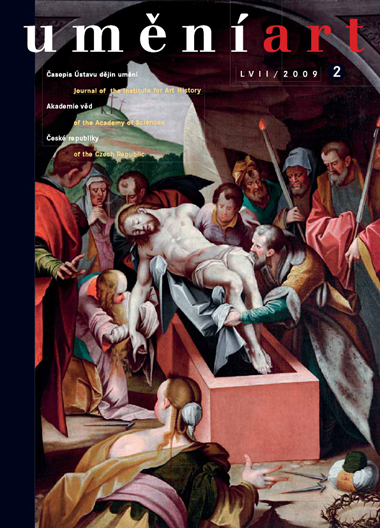Ondřej Jakubec - Radka Miltová
Elias Hauptner a Matouš Radouš - malíři umírajícího času. Manýristické epitafy v českých zemích kolem roku 1600
Epitaphs by local artists make up an important component of Renaissance art in the Czech lands. The limited artistic skill of these painters led Czech historians to form a negative opinion of Czech Renaissance painters in general. These judgements, focused on the formal aspects of epitaphs, compel us to think again about how epitaphs functioned, the background to the commissioning of such works, and their communicative roles. The study is based on two series of epitaphs in an urban setting: the work of Elias Hauptner, linked mainly to the City of Olomouc, and the work of Matouš Radouš, linked to Chrudim. Although both present us with urban scenes, the circumstances of each are distinct. The epitaphs commissioned by the canonry of Olomouc reflect the influence of the Council of Trent and contain strong Marian and saintly motifs. Conversely, in Chrudim the iconography of the epitaphs is more in the Utraquist tradition during the period before the Battle of White Mountain, while after that period the epitaphs changed and became oriented more towards a Catholic iconography. Despite differences on the confessional-manifestational level, the two groups of epitaphs share features in common, in particular the considerable imbalance in the quality of painting in some parts of the epitaph (the portrait parts being of better quality) and the assembled character of the painting strongly inspired by print work. The boom in epitaph production around the year 1600 and the visual appearance of the epitaphs lead us to view these works as commemorative objects (monuments of a sepulchral-memorial character) and as media of representation and of religious-confessional manifestation. In some places these different levels blend together; in some places confessional differences move to the fore; in others, through generally applied Christian themes, it is hard to find any religious distinctions. What specifies the meaning and tone of these works is the context in which they originated, which therefore formed an important part of our research.
Full-text in the Digital Library of the Czech Academy of Sciences:
https://kramerius.lib.cas.cz/uuid/uuid:95a09e80-3536-53a2-5fab-1cfc44a999df
< back

